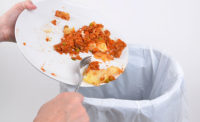Many an athlete has been saddled with the worrisome praise of having potential. It’s as though the experts are hedging their bets just in case there’s a star in the making, but they’re also telling us expectations aren’t that high.
Over the past decade or so, sustainable packaging experienced similar considerations and, in fairness, was the author of many of its shortfalls. But, it stayed in the fight, learned from experience and steadily improved to a point where, as one packaging expert puts it, “With regards to sustainability and packaging, the genie is out of the bottle and you will not get it back in.”
If that’s the case, what’s going on with the technology for bio-sourced or renewable content — two vital limbs of the sustainable-packaging family tree? Our source suggests looking at green polyethylene (sugar cane is the feedstock to get ethanol to then produce PE); food-grade, recycled polyethylene terephthalate (PET); and plant-based high-barrier materials. “If people really want to up their sustainability games for, say, a marinated steak product, consider a semi-rigid tray with a recycled PET layer, a plant-based layer for barrier, another recycled PET layer, and a green PE sealing layer. You’re using all bio-sourced, renewable materials to construct that high-barrier tray — MAP or skin pack. Then you’ve got the lid stock, which can be glassine paper, a plant-based layer, and PE,” the expert says.
Even black, semi-rigid and rigid trays are doable using a clear PET on the skin layers with a plant-based core colored with black, food-grade dye. “It’s 100 percent recyclable. The black washes away with the wastewater in the recycling process,” the expert says. This is a differentiator in the market, according the source, because black trays aren’t generally considered recyclable because the carbon black is problematic.
These sorts of innovations are compelling and, reasonably, should nurture real creative energies across the industry, but they don’t seem to. “Processors are not going to do anything until they know what the path forward is. Right now, that path is a bit murky,” our expert explains. There are so many ways to go. Do you use mono-layer PET, a barrier PET, recycled PET, plant-based films or others? All of which have performance characteristics that are not wholly understood compared with the materials processors use now.
There’s no denying sustainable packaging is a player. But, at the moment it has experience and comfort working against it. Brand owners know the yields of their existing materials. They know how they run. They know the cost structures and the supply chain. “They prefer to do just one thing, do it all the time, and do it very well.” It’s a hard ask to change something that is working and has worked great for decades. It’s certainly not impossible, but it carries more risk, at least in the short term, and in uncertain times prudence is a smart move.
By any measure, sustainable packaging is living up to its potential and, in the eyes of many, exceeding it. Now, it must overcome its toughest hurdle yet: change. NP







